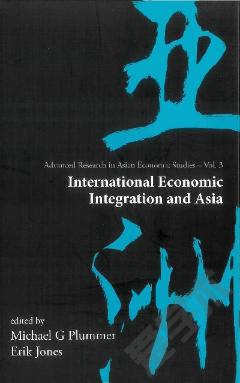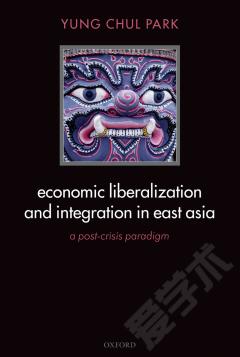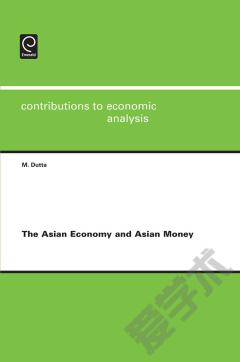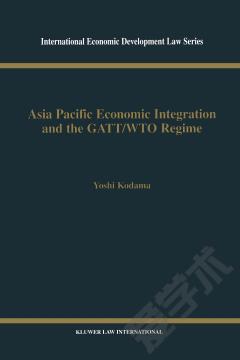Costs and Benefits of Economic Integration in Asia
Foreword Acknowledgements Contributors Acronyms I. Introductory Essay Robert J. Barro and Jong-Wha Lee II. East Asian Currency Union Jong-Wha Lee and Robert J. Barro 1. Introduction 2. The Benefits and Costs of an East Asian Currency Union 2.1 Benefits and Costs of Currency Unions 2.2 Optimum Currency Area (OCA) Criteria 3. Which Currency Union for East Asia? 3.1 Data for East Asia Monetary Union Analysis 3.2 Is East Asia an OCA? 4. Welfare Effects of East Asian Currency Unions 4.1 The Effects of Currency Unions on Growth and Volatility 4.2 Rare Disasters and Currency Unions 4.3 Estimation of Welfare Effects of East Asian Currency Unions: An Illustration 5. Concluding Remarks III. Asian Financial Integration: Trends and Interruptions Eduardo Borensztein and Prakash Loungani 1. Introduction 2. Convergence in Interest Rates and Equity Premia 3. Portfolio Holdings and Home Bias 3.1 Portfolio Holdings: Summary Statistics 3.2 Portfolio Holdings: Gravity Model Estimates 3.3 Home Bias 4. Risk-Sharing and Financial Stability 4.1 Risk-Sharing 4.2 Financial Integration and Crises 4.3 Local vs. Foreign Investors: Recent Studies 4.4 Investor Behavior during the Subprime Crisis: Evidence from Brazil 5. Conclusions IV. Understanding Business Cycle Synchronization: Is Inflation Targeting Paving the Way to Asian Monetary Union? Andrew K. Rose 1. Motivation and Introduction 2. The Effect of Trade on Business Cycle Synchronization 3. Inflation Targeting and Business Cycle Synchronization: Theory and Literature 4. The Data Set 5. Decoupling 6. Business Cycle Synchronization and Inflation Targeting 7. Regression Analysis 8. Estimating Treatment Effects via Matching 9. Why? 10. Summary and Conclusion V. Trading Silver for Gold: Nineteenth-Century Asian Exports and the Political Economy of Currency Unions Kris James Mitchener and Hans-Joachim Voth 1. Introduction 2. Historical Background and Context 3. Data 4. Method and Results 4.1 Multilateral Resistance 4.2 Results for Sub-Periods 4.3 Discussion 5. Identifying the Effects of Currency Choice 6. The Political Economy of Currency Arrangements 7. Conclusion VI. The ASEAN Free Trade Agreement: Impact on Trade Flows and External Trade Barriers Hector Calvo-Pardo, Caroline Freund and Emanuel Ornelas 1. Introduction 2. Trade Creation, Trade Diversion, and Import Barriers on Outsiders 3. The ASEAN Free Trade Agreement 3.1 Data 3.2 Tariffs 3.3 Aggregate Trade 4. The Effect of Tariffs on Trade in ASEAN 5. Preferences and External Tariffs in ASEAN 6. Conclusion VII. Economic Integration in Remote Resource-Rich Regions Anthony J. Venables 1. Introduction 2. Regional Characteristics 3. Trade Policy for Remote-Rich Economies 3.1 Low Supply Response of External Exports 3.2 The Distribution of Natural Resources 3.3 Regionally and Globally Traded Goods 4. A Benchmark Model 5. Trade Liberalizations 5.1 Trade Policy and the Intra-Regional Terms of Trade 5.2 Trade Policy: General Equilibrium Outcomes 5.3 Non-Resource Income and Within Country Income Distribution 5.4 Trade Creation and Trade Diversion 6. Policy Implications 7. Concluding Comments VIII. Regional Trade Integration and Multinational Firm Strategies Pol Antras and C. Fritz Foley 1. Introduction 2. A First Look at the Data 3. Theoretical Framework 3.1 A Simple Model of FDI 3.2 Analysis 3.3 Effects of a Regional Trade Agreement 4. Econometric Evidence 5. Conclusion IX. A World Factory in Global Production Chains: Estimating Imported Value-Added in Exports by the People's Republic of China Robert Koopman, Zhi Wang and Shang-Jin Wei 1. Introduction 2. Conceptual Framework and Estimation Method 2.1 When Special Features of Processing Exports Are Not Taken Into Account 2.2 Domestic Content in Exports When Processing Trade is Prevalent 2.3 Estimation Issues 3. Estimation Results on Domestic and Foreign Content in Exports of the PRC 3.1 Data 3.2 Domestic and Foreign Contents in Total Exports 4. Slicing Up the Value Chains along Multiple Countries: Methodology 4.1 When a World Input-Output Table (That Covers All Countries) is Available 4.2 Working with an Inter-Regional Input-Output Table (for a Subset of Countries) 5. Empirical Estimates on Value-Added Along Production Chains 5.1 Data Source 5.2 Comparing the PRC with Other Asian Economies in Production Chain 5.3 Slicing Up Production Chains Across Countries 5.4 Multinational Value-Added Chains in the PRC for Disaggregated Export Categories 6. Concluding Remarks
{{comment.content}}








 京公网安备 11010802027623号
京公网安备 11010802027623号